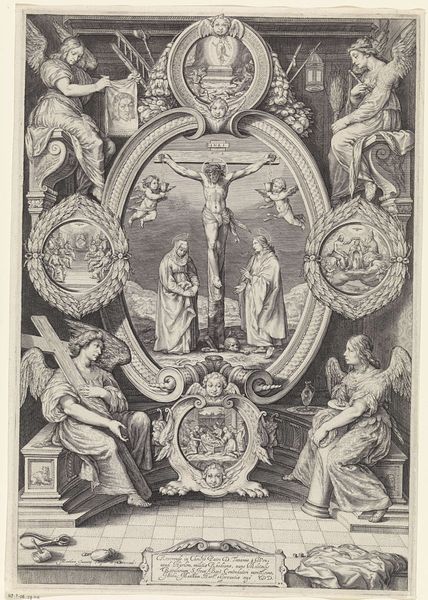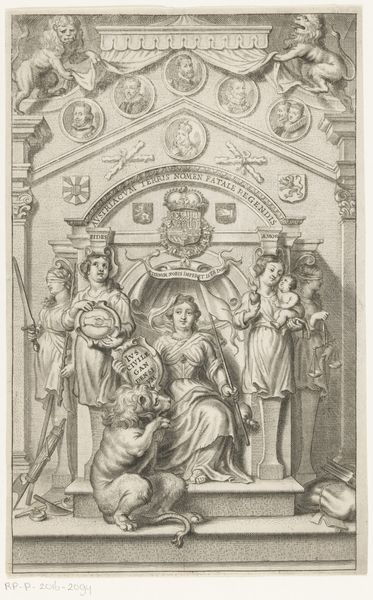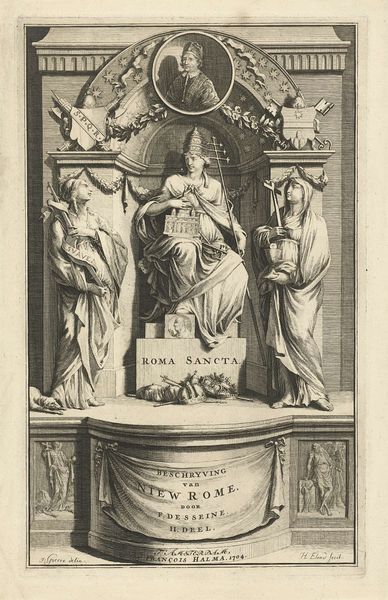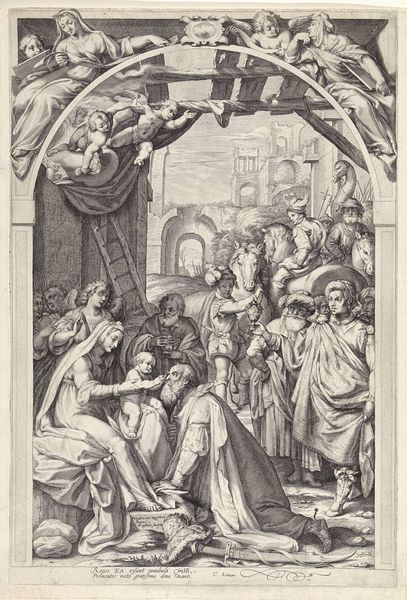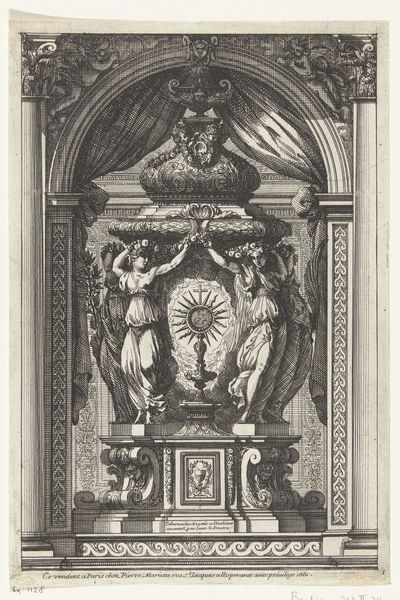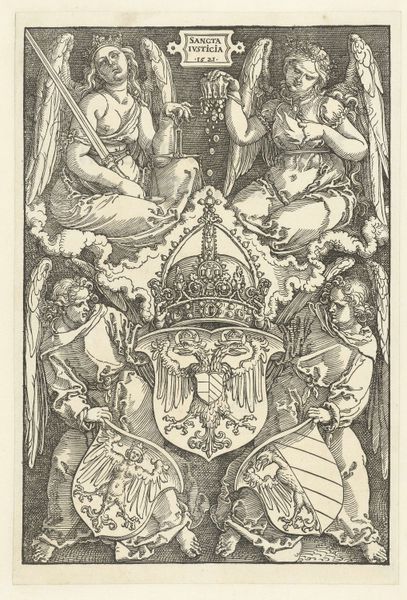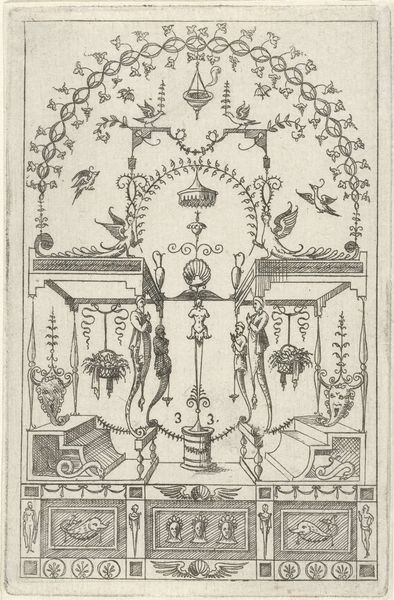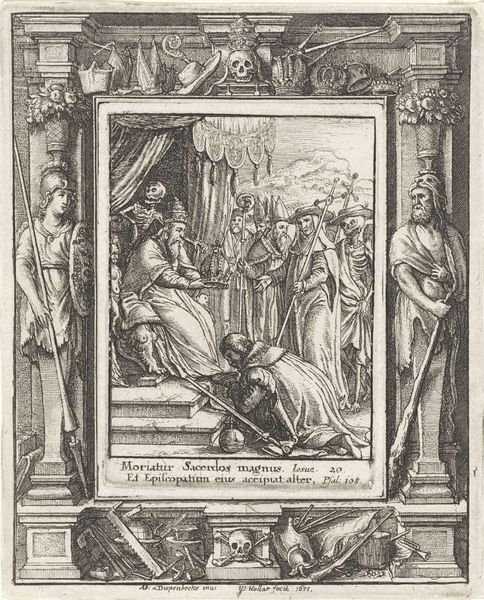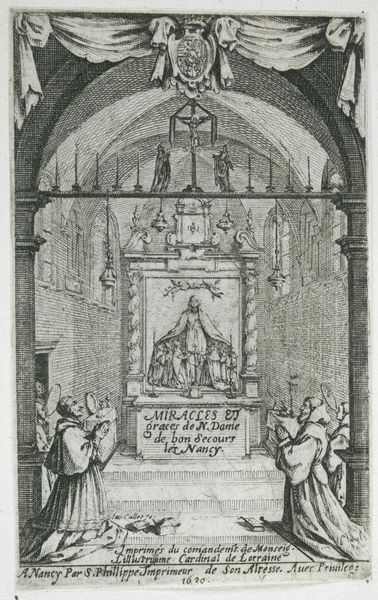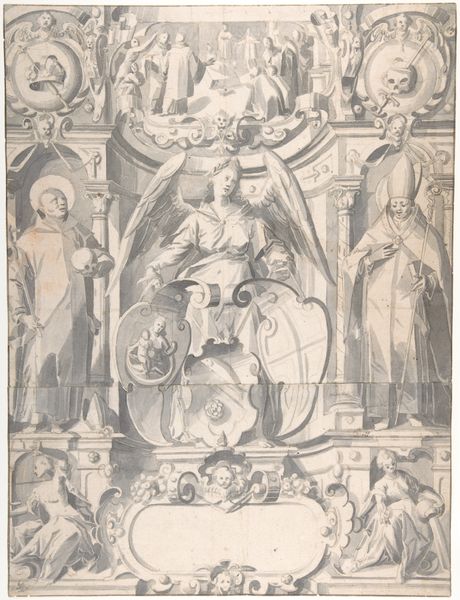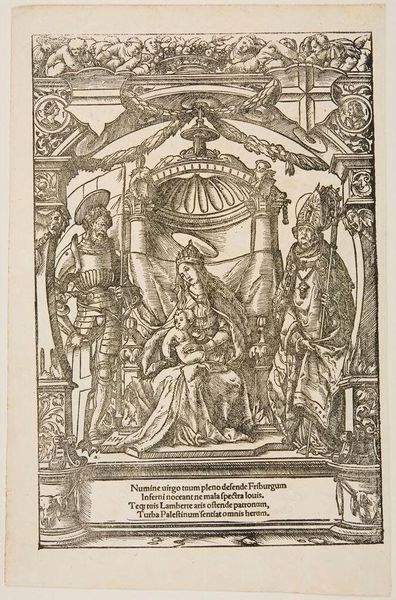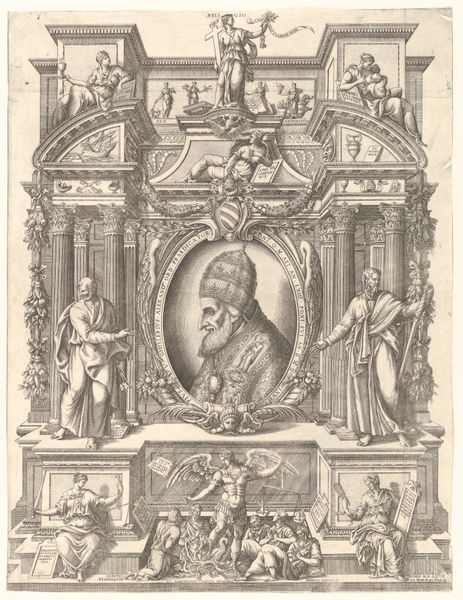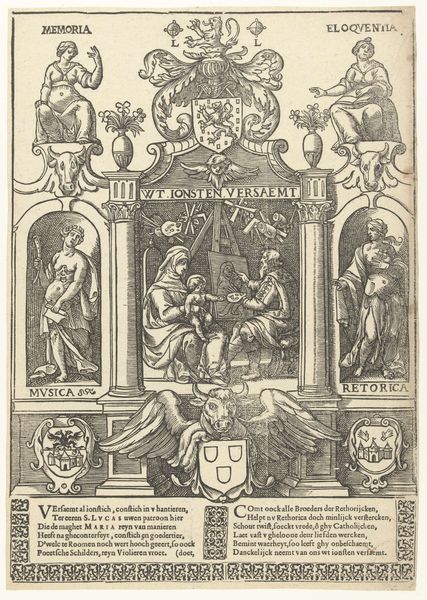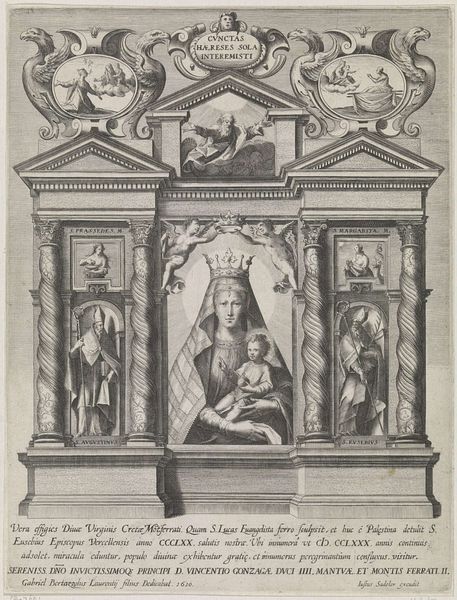
drawing, pencil
#
pencil drawn
#
drawing
#
pencil sketch
#
charcoal drawing
#
figuration
#
form
#
pencil drawing
#
pencil
#
pencil work
#
history-painting
#
northern-renaissance
Copyright: Public domain
Hans Holbein the Elder made this design for an altar for the Augsburg Cathedral in pen and ink. It is a triptych design with an arched top and a predella. The image creates meaning through its elaborate architectural setting, which is a typical feature of the Gothic style. Holbein was German, and so it is likely that the design was influenced by the religious and artistic traditions of that region, in the late 15th century. It presents the Madonna and Child flanked by saints, a traditional subject for church altars. The cultural and religious institutions of Holbein’s time would have played a significant role in shaping his artistic production. As religious art was a major form of expression during this period, Holbein’s work reflects the influence of the Church. Understanding the cultural context in which the artwork was produced can help us better appreciate its meaning and significance. Resources such as historical documents, theological treatises, and other artworks from the same period can provide further insights into the social and institutional forces that shaped Holbein’s art.
Comments
No comments
Be the first to comment and join the conversation on the ultimate creative platform.
